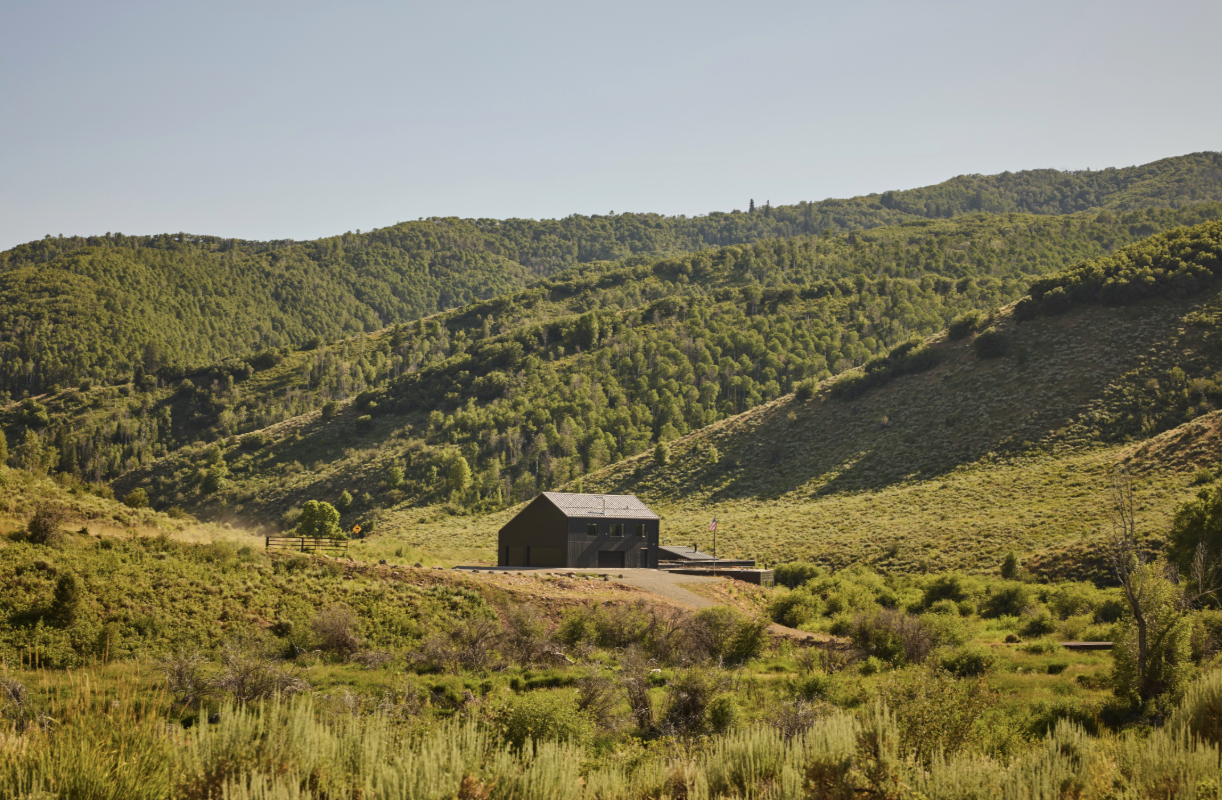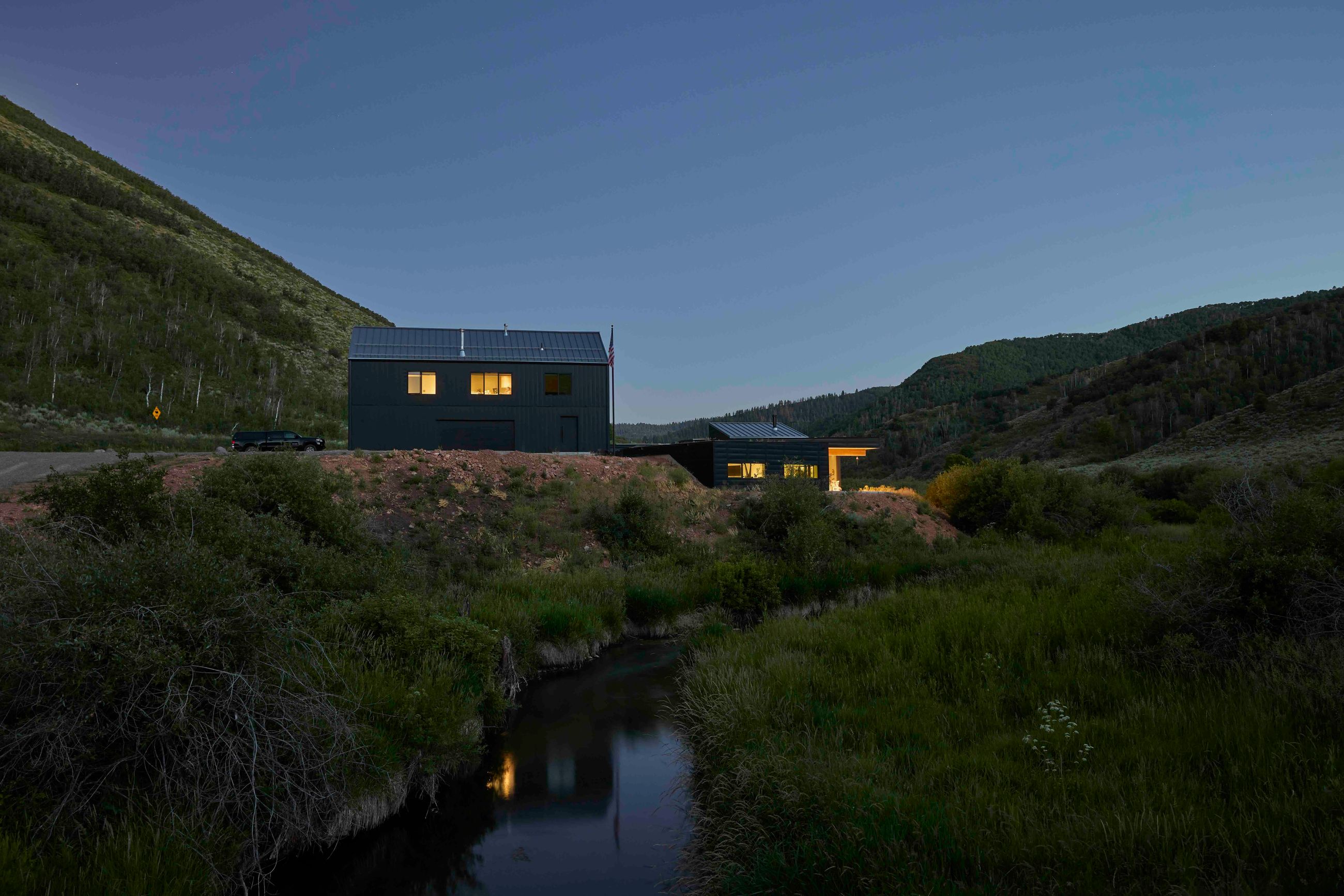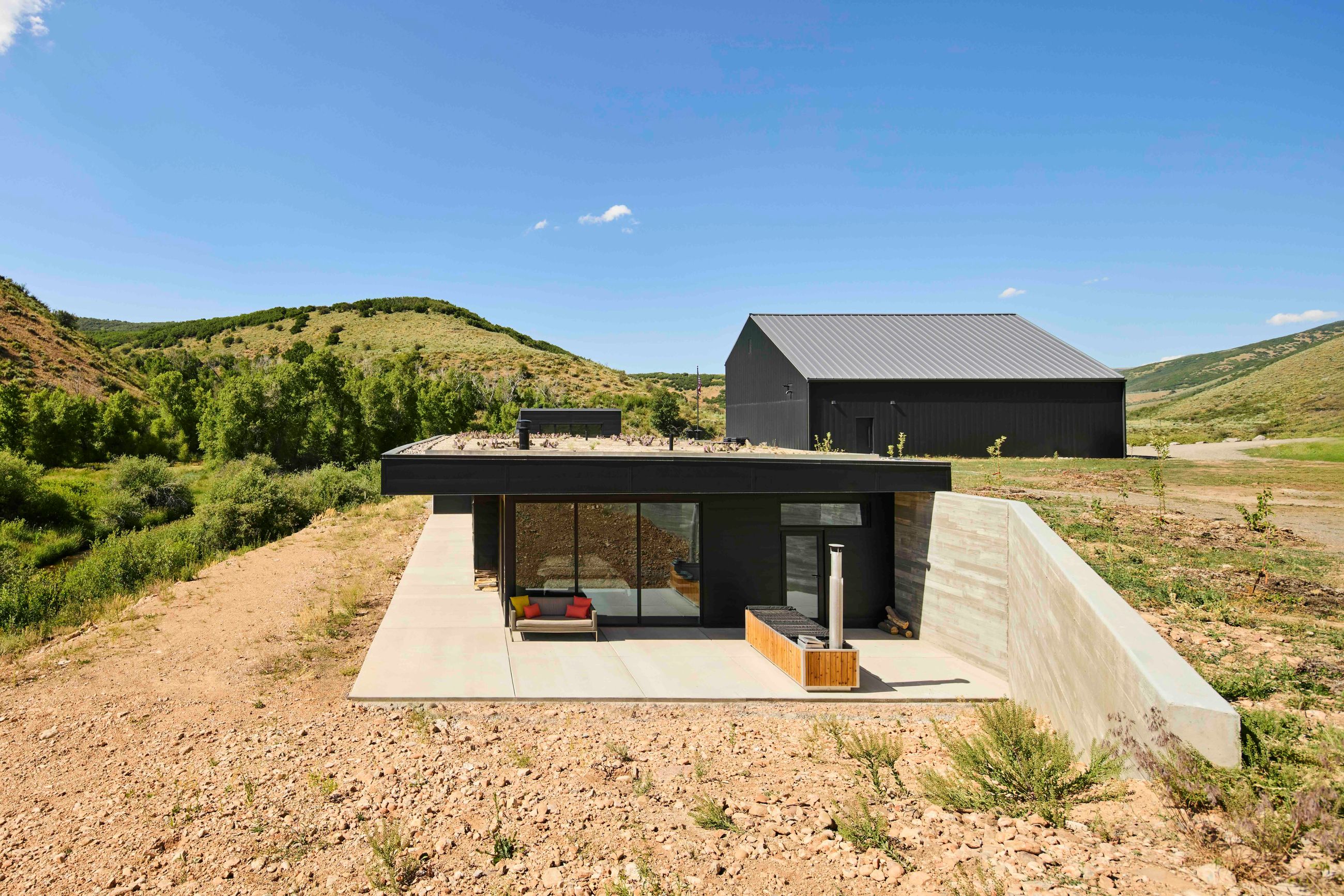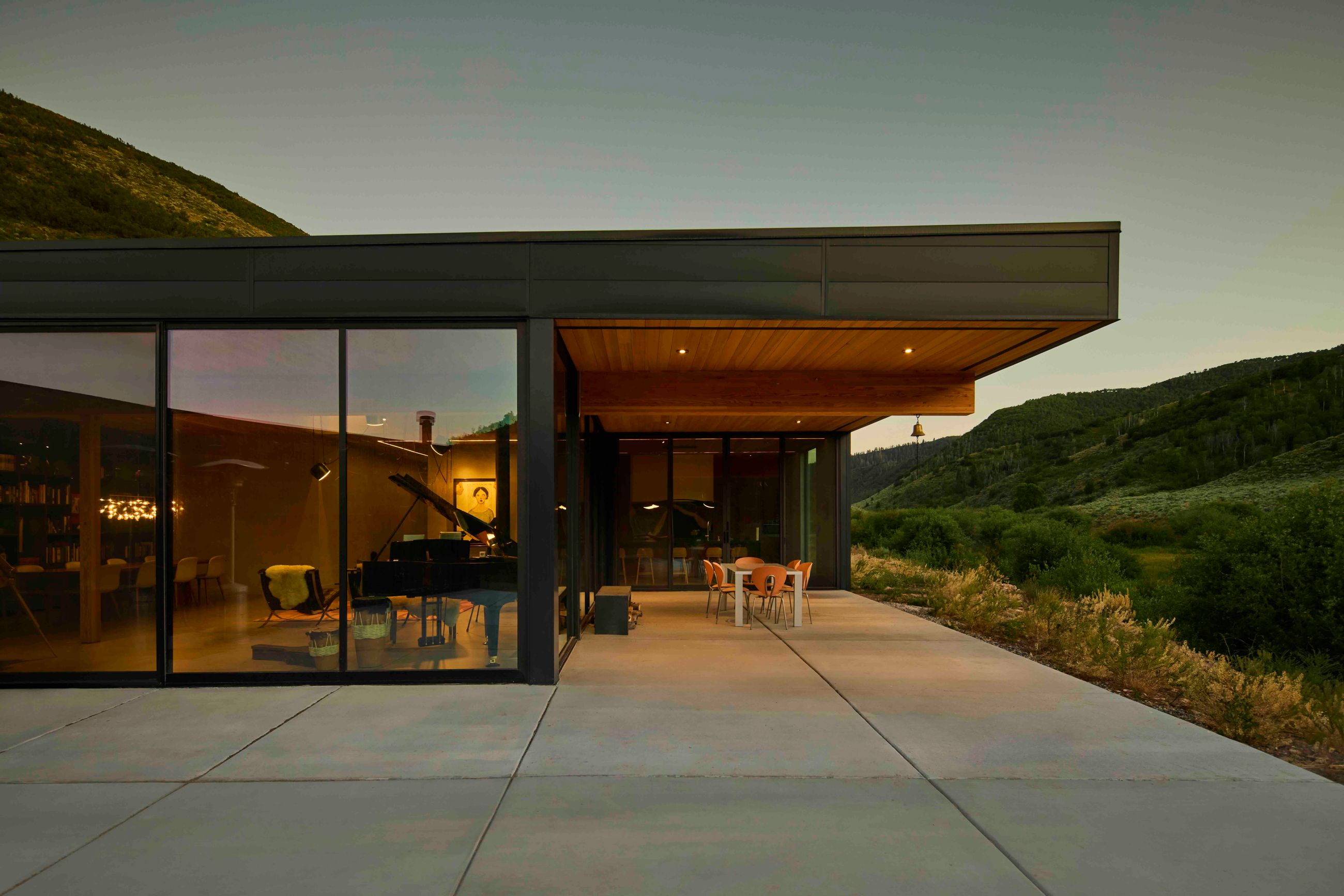Tucked Into the Land: A Nature-Inspired Home Along East Canyon Creek
Set in a canyon known to nature-loving recreationists, this newly completed residence along East Canyon Creek is nearly invisible from the road. That’s no accident. It’s the result of thoughtful site planning and a client-driven desire to minimize disturbance to the natural vistas from the road and tread lightly on the land.

The home quietly reveals itself only when you draw near. Bermed into a hillside and capped with a green roof, the main living spaces are sheltered by earth, surrounded by native vegetation, and buffered from the sights and sounds of the road. A barn-like volume stands more prominently, its form referencing the agrarian architecture of the region. But the overall composition of the site is understated, intentionally designed to blend rather than boast.
Architecture in Dialogue with Nature
From the outset, the clients demonstrated a profound respect for the landscape and a desire for privacy that would not compromise the experience of passersby, who hike, bike, and run along the nearby road. In response, the design team took cues from the topography—and got creative with the limited amount of buildable land. The home is carved into a large slope on the project site, minimizing its visual impact and creating a strong thermal envelope.

The bermed construction provides insulation on the eastern side of the house, reducing energy use and eliminating the need for air conditioning. The home instead uses a combination of radiant floor heating and passive cooling strategies, including natural ventilation, earth ducting, and night-flush cooling. Carefully considered window placement, deep overhangs, and shaded porches help the home stay comfortable through seasonal temperature swings.
The design also anticipates a solar-ready future. The barn’s roof features an asymmetrical gable design to optimize solar exposure, and although solar panels haven’t yet been installed, the necessary infrastructure is in place to support them. The clients also explored hydroelectric options and are currently planning to implement wind power on site, reflecting a broader commitment to sustainable living.

A Hidden Entry, A Revealed Experience
Inside, the home unfolds in a series of unexpected ways. A low-profile black entry door—camouflaged into the barn-like façade—leads into a thoughtfully designed mudroom and down a backlit concrete stair into the heart of the home. That descent is the first hint of the unique spatial experience that lies ahead.
A hallway, designed as an art gallery, connects the barn’s garage to the main living space, including a home gym, sauna, lounge, and office. Beyond the living space is a long hallway with five bedrooms, each opening onto private patios with views and sounds of the creek and wildlife. Utility spaces and bathrooms are located on the bermed side, where windows are less of a priority. A continuous wood ceiling, inlaid with a subtle lighting strip, guides you through the home, while natural materials and clean lines create a sense of calm and serenity.

Landscaped with Intention
Just as the architecture recedes into the hillside, the landscaping reinforces the home’s deference to its surroundings. Native grasses and plantings were chosen to blend with the existing vegetation, without imposing a non-native lawn or ornamental flower beds. Even the chicken coop and fruit trees are part of a broader goal: to live lightly on the land while enjoying its bounty.
As the green roof plantings take hold, the long-term vision becomes clear: a home that seamlessly integrates into the terrain, sustaining its inhabitants while preserving the site's integrity.
Building from Here
This home illustrates the balance we seek in all of our projects: design that responds to its site, reflects the values of the people who live there, and creates spaces that feel deeply connected to place. Reflecting the values of the homeowners was a priority, and the response is a home that goes beyond the intent of blending with its surroundings. Instead, it celebrates place, diminishing itself from the public vistas while opening onto the land and celebrating all that nature has to offer.
See more photos of the East Canyon House here
